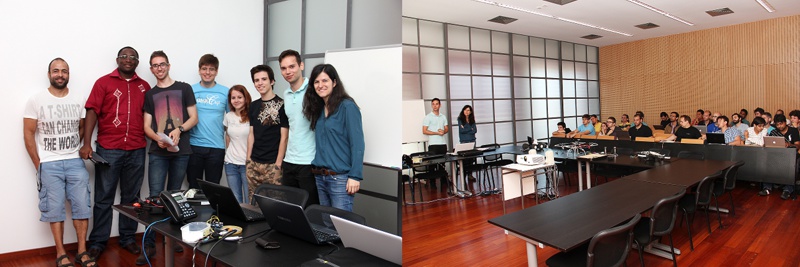Work-in-Progress of promising BIC students at CISTER
29, Jul, 2014
Six promising and highly motivated BIC students from ISEP and FEUP joined CISTER for three months to enrich and stimulate their buzzing minds. They formed three teams of two students each (one BIC student from each institution in each team) to contribute to a set of very challenging and ambitious projects, described below. The work is conducted under the orientation of CISTER researchers.

Project 1: Sensing in motion: by Marco Rodrigues (ISEP) and Miguel Sandim (FEUP) oriented by Raghuraman Rangarajan and Vikram Gupta
Real-time environment monitoring is required to quickly address issues of pollution of noise, air, water and land. This is especially important in an urban scenario for situational awareness and improved decision making. Current air pollutant sensors are in fixed locations and away from critical places. The aim of this project is to make a modular UV-based system capable of autonomously taking environmental measurements at different localities and transmit this data in real-time.
Project 2: Vision feedback to control 3D motion: by Dalila Lima (FEUP) and Nuno Almeida (ISEP) oriented by Filipe Pacheco and Shashank Gaur
Quadcopters provide easy and affordable 3D movement capabilities and enable new robotic tasks. However controlling the position in space of a device with adequate accuracy is a challenge. In this project computer vision is used to provide real-time position feedback and enable simple control in the 3D space of the quadcopter. The target application is an plotter-like demonstration where the quadcopter can draw paths on a vertical wall without human assistance.
Project 3: Tele-presence robot: by João Pacheco (ISEP) and Paula Fortuna (FEUP) oriented by Pedro Souto and Ricardo Severino
Conventional video-conference systems although very useful allow for limited interaction. This project will combine a video-conference system with a wifibot to allow for a more interactive experience. Its goal being to allow a user to roam around a remote place and interact with remote users via a video-conference system, e.g. to remotely assist in lab work.

